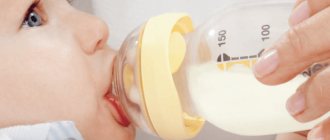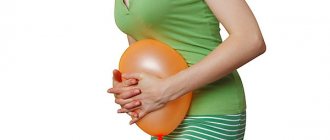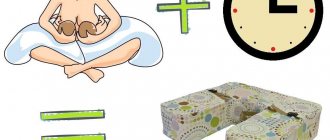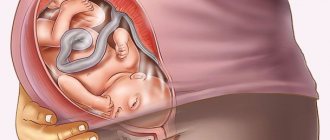Pumping while breastfeeding
There is no need for a woman to express her breasts during lactation. If the milk comes on demand, is available in sufficient quantities and does not cause problems, the mother can relax and enjoy time with the baby.
With the help of pumping, you can regulate lactation if the need arises. Depending on what and how often you treat your breasts, the process of milk production will change.
Hands or breast pump?
A woman who decides to pump always has a question about what to use to empty her breasts. Since ancient times, manual breast pumps, reminiscent of a syringe bulb, have been used for this purpose. However, their traction is insufficient, and the procedure itself is painful.
Modern devices for expressing are manual and electric breast pumps. The latter work quickly and do not cause discomfort. Using a small electric machine, you can get a portion of milk for a single feeding in a few minutes. The downside to electric breast pumps is that they can go overboard. Expressing your milk fully and often will increase your milk production. This threatens a woman with hyperlactation with subsequent cases of lactostasis and mastitis.
Expressing by hand is more difficult and takes longer. However, this way you can completely control the process of emptying your breasts. Manual expression creates the illusion of natural feeding, which has a beneficial effect on the mammary glands. During the procedure, the woman independently changes the pressure, pressure and position of her fingers. In addition, hand expression does not require material costs.
As an alternative, modern manual breast pumps can be used. They work in a similar way to electric ones, but allow the woman to control the pressure and speed of milk flow.
Why you might need to express your breasts
By expressing her breasts, a woman pursues certain goals. Depending on the initial situation and the expected result, breast stimulation can be performed regularly, with breaks for natural feeding, or once.
After childbirth
After a natural birth, the baby is placed at the breast. If for some reason this cannot be done, it is necessary to express the mammary glands within 4-6 hours.
If in the future the baby is with the mother, additional emptying of the breast is not required. It is necessary to continue nipple stimulation every 1-2 hours when the baby does not latch on or is temporarily bottle-fed.
Before or after feeding the baby
The balance of breast milk allows the baby not only to use it as food, but also to replenish the lack of fluid. Physiology provides that first, foremilk is released from the breast, which has a liquid consistency and allows the baby to drink. After this, the production of a fattier and more nutritious portion of milk begins.
If you pump before feeding for no reason, you can upset this balance, which will lead to disruption of the baby’s digestive tract. Pumping after breastfeeding leads to an increase in baby food volumes.
Stagnation of breast milk with lactostasis
With lactostasis, one of the ducts becomes blocked. This leads to the accumulation of biological fluid in the gland, the formation of a lump, swelling and pain. It is difficult for a child to cope with the problem on his own. Therefore, before latching the baby, a woman should knead the bump a little and express a portion of milk of 5-10 ml.
Creation of a milk bank
A home breast milk bank is created for the purpose of further supplementary feeding of the child. It is not recommended to pump in the first 2-3 months, when lactation has not yet established. In the future, a woman can express 50-200 ml during the day without compromising breastfeeding.
If mom needs to go
To leave for a long time, a nursing woman needs to leave a bottle of milk. To do this, pumping is performed first. It is advisable to choose a glass container for storage. Depending on the age of the child, you may need from 50 to 300 ml of milk per feeding. It is necessary to take care of obtaining such volumes in advance.
Increased lactation
To increase lactation, pumping is performed after feeding. When the baby is full, the mother needs to empty the breast, but no more than 30-50 ml. The mammary glands respond well to increased demand and after just a few feedings begin to produce more nutrition for the baby.
Weaning your baby
Depending on how long breastfeeding lasted, the process of extinction of lactation occurs individually. If you wean your child at 2 years or later, there are usually no problems with milk. Refusal at an earlier age causes the need to pump.
It is important not to empty the mammary glands completely. You can express milk by hand until relief occurs. The intervals between procedures should be as large as possible, and the volume of expressed milk should be less.
Junk food and alcohol
The opinion that pumping can reduce the influence of food and alcohol on a child is erroneous. As long as the components of the diet are in the blood, they continue to enter the milk, no matter how many times the woman empties her breasts. In this case, there is no point in pumping.
How often should you express breast milk?
Do I need to express milk?
breast-feeding
Expressing breasts after feedings may not be a procedure that is necessary regularly. A nursing mother is designed to produce milk according to the needs of the child; her body is not designed to produce excess milk, like the body of any mammalian creature. What animal in the wild expresses the remaining milk after giving birth to its baby? Some animals are deliberately milked by humans. Prejudices associated with breastfeeding, formed over the 20th century, force some women to milk themselves...However, the answer to the question: is it necessary to express milk is not so clear...
Under natural conditions, the baby is put to the breast on demand, quite often. The baby's need to suck is not associated with a feeling of hunger. He just wants to suck in response to any of his discomfort, he tries to get rid of it this way, regardless of what it is caused by - a feeling of hunger or a desire to sleep. Over hundreds of thousands and millions of years of evolution, the endocrine systems of mammalian creatures have become accustomed to producing sufficient quantities of milk with frequent stimulation of the mammary glands by sucking. This is what happens when you feed your baby on demand. In this case, the baby constantly sucks out small portions of milk; there is no long-term accumulation of milk in the breast. When feeding on demand, the baby is applied to one breast several times for about 1.5-3 hours, during which time he sucks it out and begins to apply to the other. If the baby is fed according to a schedule, the breast can wait 6-8 hours for the next feeding; it is not at all designed for such accumulation of milk. The woman’s body “concludes” that no one needs milk. If milk is not expressed, the body begins to produce a special protein - a lactation inhibitor. When the amount of lactation inhibitor increases, the hypothalamus receives a signal to decrease prolactin, and the amount of milk decreases.
When feeding on demand, a woman’s lactation quickly stabilizes and milk is produced according to the baby’s needs, without excess or deficiency. There is simply nothing to express. This is technically impossible, because... breastfeeding is rarely less than 12 per day. There are mothers who still try to pump after feedings, even putting the baby to the breast on demand. Usually they quickly get bored with this tedious task, but sometimes, unfortunately, they start producing excess milk - hyperlactation. The mammary gland begins to produce milk for a very voracious baby or twins, because... The principle of milk production “according to the child’s needs” continues to work.
When is pumping really necessary?
- To maintain lactation if mother and baby are separated for various reasons. Regular pumping can maintain lactation for a relatively long time. In such a situation, it is advisable to express 6-10 times a day, depending on the circumstances, for each breast for 10-15 minutes.
- If the mother needs to leave the baby, and leave milk for him during her absence.
- If the mother has developed lactostasis - blockage of the duct of the mammary gland lobule with a fatty droplet or milk clot. Lactostasis must be strained if the baby cannot resolve it.
- When milk comes in after childbirth. At this time, most mothers are still in the maternity hospital and receive a recommendation to express until the last drops, otherwise mastitis will supposedly await them. This often triggers hyperlactation - the formation of excess milk. But keep in mind that when your milk comes in, you can’t express everything without leaving a trace! Substances that signal that excess milk is being formed appear in a full breast after about a day. If you express all the milk earlier than in a day, then the same amount will be formed.
When the milk is actively coming in, you need to put the baby to the breast, as often as he asks, and at the request of the mother, when he does not ask, and the mother feels that it is time to suck the milk. And only in that situation, if the child does not want to suckle at all, for example, is fast asleep, but the mother already has pronounced discomfort in the chest, she needs to pump the breast a little until she feels relief! Typically, the need for such pumping occurs no more than 1-3 times a day for 1-3 days.
If there is a rush of milk in the first three weeks after birth, you need to do the same. During the first month after birth, in most women who managed to organize breastfeeding naturally, lactation stabilizes, periodic flows of milk disappear, and the breasts become soft.
Mothers experience the most problems with breasts in the first days after childbirth when they are separated from their child. The baby is brought in, but according to the schedule after 3.5 hours and he does not always want to suckle. In this case, the mother needs to focus on proper breastfeeding while feeding the baby and place the baby on both breasts to better stimulate lactation. When kept separately, a child is always fed from a nipple, and he may latch onto the breast incorrectly from the first day of life. Poor sucking does not empty the breast well.
In the first days before the milk comes in, while the mother has colostrum, she can consider each feeding of the baby, during which he suckled, as pumping. If the baby was brought in and he did not suck or sucked sluggishly, she definitely needs to pump both breasts for 10-15 minutes each. If there is no milk coming in on the 3-4th day after birth, then you need to add two additional pumping sessions, for a total of eight feedings/pumpings during the day. When the milk comes in and the breasts fill, the mother who is bringing the baby according to the schedule needs to be very attentive to herself, because... in this case, breast engorgement may develop.
The self-regulating mother-baby system does not work in such a situation, therefore, when filling the breasts, it is necessary to limit fluid intake to 3-4 glasses per day and express the breast twice, in the morning and in the evening, but not after 9 pm and before 9 am. If you express at this time, for example, at 12 am, you can stimulate lactation, because... The main hormone responsible for milk production, prolactin, has a circadian rhythm and is most produced at night in response to sucking or pumping. If the condition does not improve after 24 hours, then once a day you need to express completely (in the morning or at night, after 9 am or before 9 pm), and during the day - only until you feel relief after or instead of feeding according to the feeding regimen, depending on the sucking activity child. If the mother feels relief after the baby has sucked, there is no need to express.
When a mother ends up at home after being separated, the baby usually gets used to the routine and may have difficulty latching on to the breast. In this situation, mother and baby need consultation on breastfeeding, because... it is necessary to teach the child how to attach correctly, and the mother - how to control the correct attachment and continue teaching the baby how to suck well; it is necessary to transfer the child to feeding on demand and learn to feed comfortably from different positions. Expressing should be gradually abandoned, reducing the volume of expressed milk and the number of expressions. Usually the mother stops pumping within 3-7 days.
Cases when expressing is necessary
In a number of situations, expressing breast milk is encouraged:
- the child was born prematurely and is forced to be bottle-fed;
- a woman has a lot of milk, which leads to blockage of the milk ducts and prevents the baby from suckling;
- the amount of milk is not enough for the baby (this should be confirmed by low weight, increased restlessness and a decrease in the number of wet diapers during the day);
- the mother requires treatment with potent drugs or long-term separation from the baby.
If you have doubts about the need to empty your breasts, you should consult your doctor. The specialist will assess the current circumstances and give the woman individual recommendations.
Video about hand expressing milk
There are situations when you really need to express breast milk. However, they occur infrequently. In most situations, women resort to this method without justified reasons. You should not listen to friends who recommend pumping after every feeding or follow the experience of grandmothers who emptied their breasts to the last drop. Nature intended the natural establishment of lactation without any pumping.
When should you express breast milk?
- If you have little/not enough milk. Pumping can stimulate increased milk production.
Remember! If your child is crying, then he has a thousand reasons for it. This doesn't have to mean your milk supply is low!
- You can start pumping if you want to create a breast milk bank. There are special containers, bags, jars for storing milk in the freezer. You can fill them and knowing that you will have to leave for some time, you will not worry, and the child will be fed in your absence.

- Also in case you have to go to work and the child is still very small. Pumping will come to the rescue. Some time before going to work, the mother needs to collect a bank of breast milk. Additionally, you will need to pump at work. As a rule, for mothers who are breastfeeding, the workplace is required to give more free time so that the mother can go to feed the baby, or she has time and place to express milk. It needs to be stored in the refrigerator until she takes it home.
- In case of an emergency. For example, a mother got sick, was hospitalized, and takes medications that are incompatible with breastfeeding. Pumping (every 3 hours) will help maintain lactation. And when the mother recovers or returns home, she will be able to breastfeed again. The same should be done if an infant falls ill and is admitted to the hospital. The mother will have to pump at home in order to transfer milk to the baby for feeding.
- Pumping will also help you gently wind down your milk supply. Are your breasts full of milk, do you feel engorgement and discomfort in your breasts? Express a little at a time until you feel relief. The feeling of fullness and distension should pass.
- If you have a blocked milk duct in your breast. It is necessary to express the breast as much as possible, gently kneading the painful area. Then give this breast to the baby. He will begin to pull milk with force, and the blockage of the duct will move towards the exit. In this way, the baby helps the mother cure lactostasis.
- In the first month after birth, when milk has just come in, as well as during the formation of lactation. Nature has it this way; the body needs some time to figure out exactly how much milk your baby needs. If too much milk has arrived, you can express a little. Just a little bit to relief!











